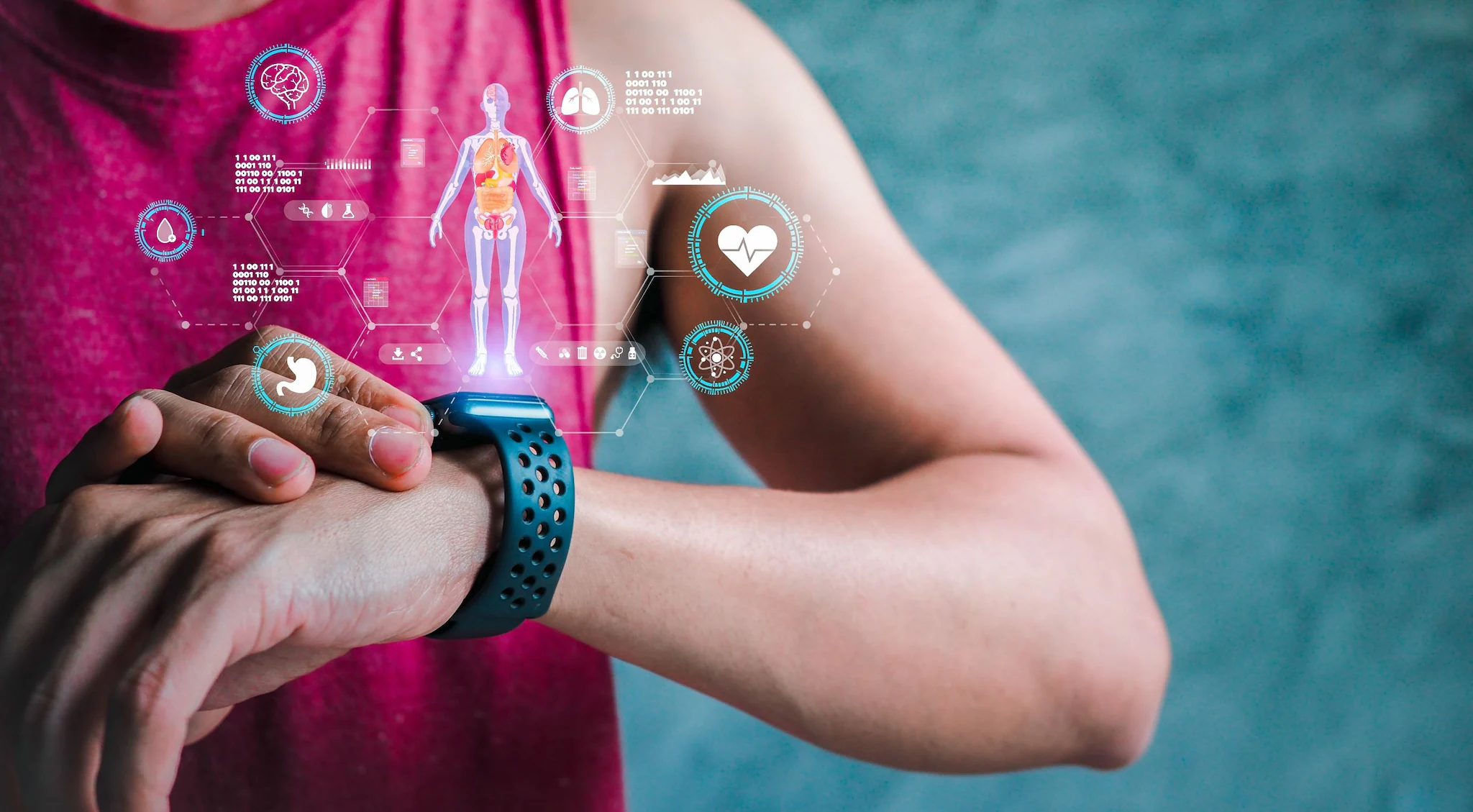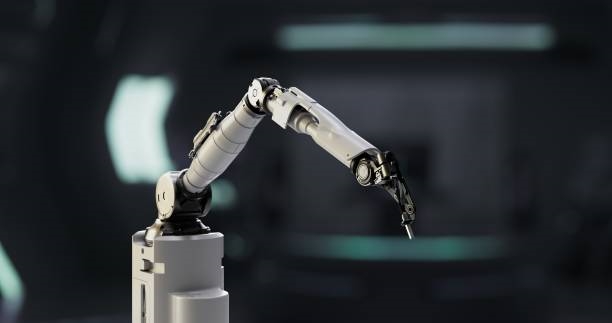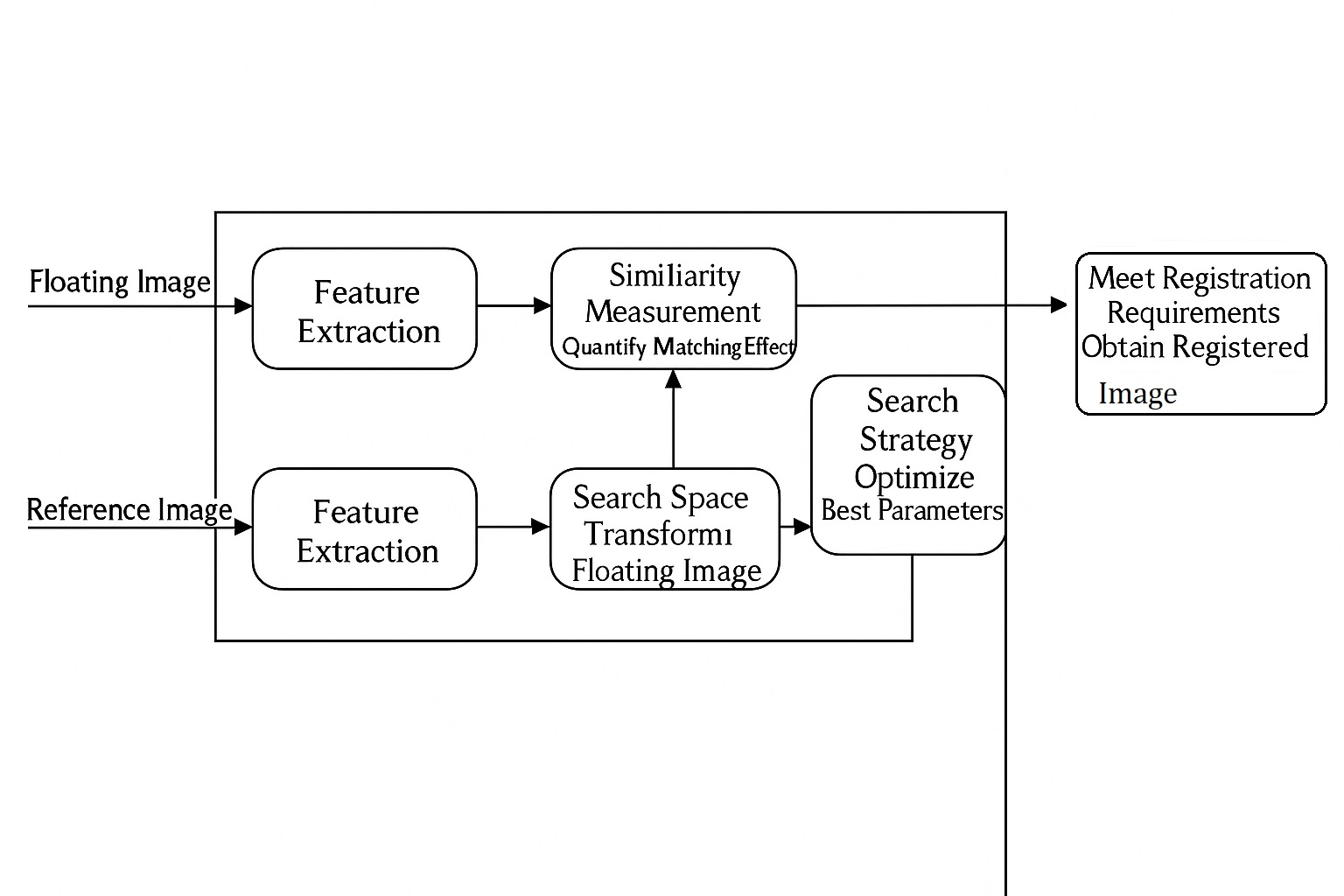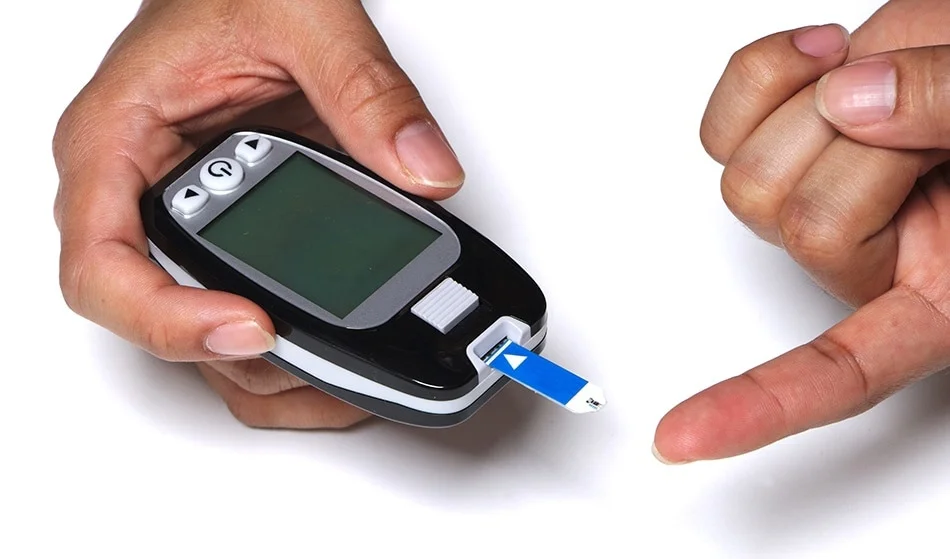Wearable Devices Combined with Artificial Intelligence in Healthcare
Small, portable wearable devices have become effective tools for monitoring patients' physiological status. With rapid advances in artificial intelligence (AI) and machine learning, these wearables are becoming more accurate and intelligent, enabling earlier prediction of patient condition changes to provide timely alerts, medical intervention, or drug delivery that can save lives. This article summarizes recent developments in AI-enabled wearable devices and presents related solutions from ADI, onsemi, and Murata.
The Convergence of AI and Wearable Technology
Wearable devices have been used in healthcare for many years; hearing aids are a common example. The invention of digital hearing aids in the late 1980s marked a shift toward digital solutions, and wearables have since evolved into many forms with increasingly broad healthcare applications.
Supported by smart sensors, AI, and machine learning, wearable devices are now used for remote patient monitoring, early diagnosis, chronic disease monitoring, and improving daily health and lifestyle. They can also address emergency health situations. Use of intelligent wearables in healthcare is growing: these devices are expected to save the US healthcare industry roughly $200 billion over the coming years. The global smart wearable market is projected to reach about $180 billion by 2025.
Because wearables are mobile, autonomous, accurate, and easy to use, AI-enabled devices are valuable assistive tools for healthcare providers. They played an important role during the COVID-19 pandemic when access to clinical facilities was more difficult.
Existing applications include AI plus acoustic detection for remote cardiac monitoring; AI and big data to predict female fertility; AI wearables for navigation and obstacle avoidance for blind and visually impaired users; devices that help deaf users perceive their environment; and continuous glucose monitoring systems that trigger automatic insulin delivery for diabetes management.
AI processes healthcare data from wearables through algorithms to generate timely inferences, enabling data-driven decisions by clinicians. Wearables also enable telemedicine interventions to support remote care. Wider high-speed internet coverage and demand for lower-cost treatment options are driving innovative AI-driven wearable products that have significant long-term potential for the healthcare industry.
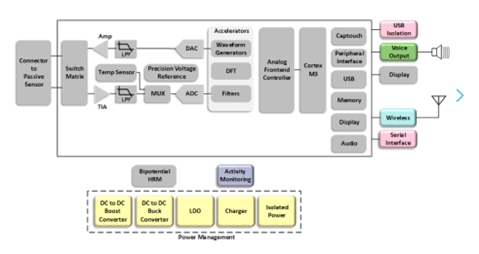
Comprehensive Product Lines for Wearable Health Monitoring
ADI offers a range of technologies for wearable health monitoring, including optical, impedance, bio-potential, and motion sensor technologies plus signal-conditioning expertise. Using ADI's highly integrated, low-power on-chip metrology platforms such as the ADuCM350 development platform—which integrates a 16-bit precision analog front end (AFE), a Cortex-M3 processing subsystem, and industry-standard software tools—designers can build wristbands, fitness watches, pedometers, and other wearable monitors powered by coin cells. ADI's broad portfolio of converters, linear, and mixed-signal components also supports discrete designs.
Key ADI devices for wearable health monitoring include ADPD4100, ADPD4101, AD8233, ADF7030, ADF7030-1, ADP530, ADPD105, ADPD106, and ADPD107. ADPD4100 and ADPD4101 are multi-mode sensor front ends; AD8233 is an integrated signal-conditioning module for ECG and other biopotential measurements; ADF7030 is a high-performance, low-power 169 MHz ISM-band radio transceiver IC; ADF7030-1 is a high-performance sub-GHz radio transceiver IC; ADP530 is a 150 mA/500 mA high-efficiency, ultra-low-power buck regulator; ADPD105 integrates an I2C brightness measurement front end; ADPD106 integrates a brightness measurement front end with one output and SPI; and ADPD107 integrates a brightness measurement front end with SPI.
ADI's portfolio also includes ADuCM3029, ADuCM350, ADXL354, ADXL355, and ADXL362. ADuCM3029 is an ultra-low-power ARM Cortex-M3 MCU with integrated power management and 256 Kb embedded flash. ADuCM350 integrates a Cortex-M3 core with a configurable impedance network analyzer and potentiostat. ADXL354 is a low-noise, low-drift, low-power 3-axis accelerometer with analog output; ADXL355 is a low-noise, low-drift, low-power 3-axis accelerometer with digital output; and ADXL362 is an ultra-low-power 3-axis digital-output MEMS accelerometer with ±2 g/±4 g/±8 g ranges, enabling richer functionality for wearable health monitors.
ADI also provides several reference designs to accelerate product development, including CN0133, CN0160, CN0159, and CN0274. CN0133 is a reference design for detecting low-g acceleration using the ADuC7024 precision analog microcontroller and ADXL345 digital accelerometer. CN0160 is a USB peripheral isolator circuit reference design, CN0159 is a USB cable isolator reference design, and CN0274 is an ultra-low-power standalone motion switch.
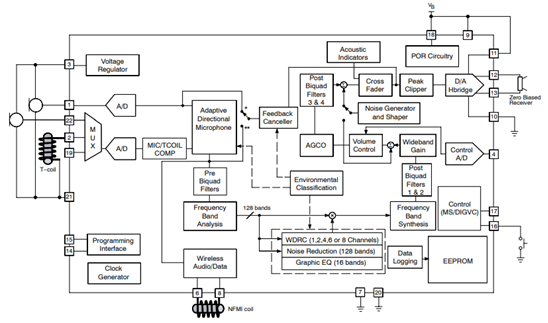
Complete Solutions for Space-Constrained Wearable Medical Products
onsemi provides solutions aimed at near-patient testing and diagnostics to improve effectiveness and outcomes. Advances in point-of-care diagnostics covering glucose, oxygen saturation, rapid strep tests, and noninvasive genomic diagnostics such as liquid biopsy enable improved instant diagnostics and faster treatment options with minimal patient burden.
onsemi's image sensor portfolio offers camera manufacturers options for applications ranging from wearables and consumer electronics to demanding industrial, medical, and automotive endpoints. Combined with advanced packaging and miniaturization techniques, onsemi provides technologies that address the size, performance, and system integration needs of medical applications, including long-standing constraints in hearing aid design.
For hearing aid applications, onsemi has been a provider of ultra-low-power solutions such as Audiology DSP systems. Relevant product families include EZAIRO 5900, EZAIRO 7100, Ezairo 8300, EZAIRO 7160 SL, and EZAIRO 7111. The EZAIRO 5900 series features two independent, fully programmable signal-processing cores with unique attributes; the EZAIRO 7100 series meets the high-performance and strict power requirements of advanced hearing aids and implanted devices; Ezairo 8300 is an advanced audio processor with six programmable or semi-programmable cores offering high parallelism and flexibility; EZAIRO 7160 SL is a DSP-based open programmable hybrid module that enables wireless connectivity in hearing aids; and EZAIRO 7111 is a DSP-based open programmable hybrid module designed for non-wireless hearing aids.
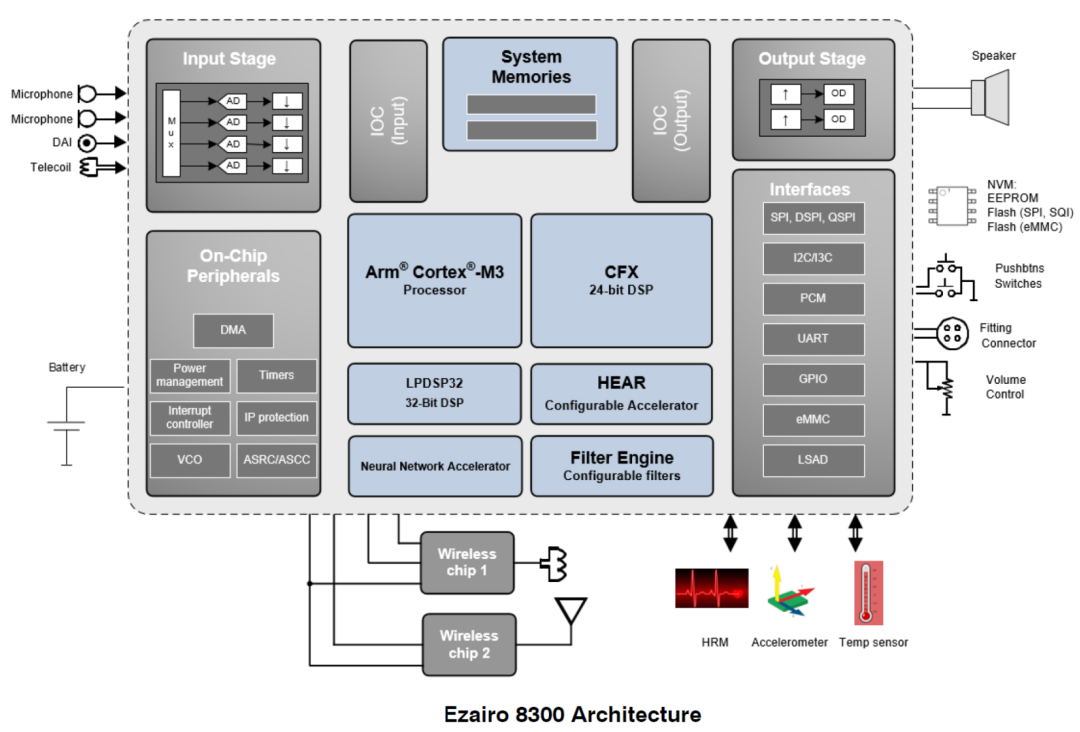
Low-Power, Reliable Connectivity for Healthcare Devices
As electronics penetrate healthcare, advances in electronics continue to enhance device functionality. Murata supplies RF modules and components that help shape the future of connected healthcare.
Healthcare devices increasingly require low-power, reliable connectivity. Murata's validated RF modules offer excellent RF performance to help customers add connectivity even in space-constrained, low-power devices. One example is the Type 1XL module supporting Wi-Fi a/b/g/n/ac/ax and Bluetooth 5.2, Murata part number LBEE5ZZ1XL-774, which simplifies design and supports antenna matching for electronic health and home monitoring devices such as blood pressure monitors and glucose meters.
Another Murata Bluetooth module, MBN52832 (part number WSM-BL241-ADA-008), measures just 7.4 x 7.0 x 0.9 mm. Murata's packaging makes the module very compact, allowing more space in customers' products. Metal-coated shielding eliminates the need for a metal can, minimizing cost and size. The module integrates RF design, easing high-frequency analog design concerns, and has passed FCC/IC/CE/TELEC testing to simplify certification. It uses an embedded MCU module for a minimal solution and offers a board-mounted antenna.
Murata modules are tuned for good RF performance and support antenna matching to meet application needs. They are suitable for a range of personal healthcare devices such as blood pressure monitors, thermometers, hearing aids, glucose meters, insulin pumps, and skin patches.
Conclusion
Wearable medical devices have become valuable companions for health-conscious individuals and patients with chronic conditions, and they provide clinicians with useful data for treatment decisions.
 ALLPCB
ALLPCB


